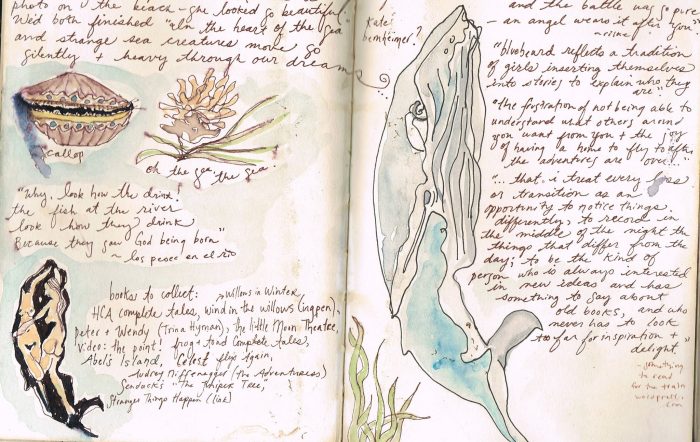Ever noticed how certain colors instantly evoke feelings? That’s the magic of color archetypes! They’re like secret codes embedded in our psyches, connecting us to deep emotions. In the world of visual journaling, these archetypes become powerful tools for self-discovery and healing.
Think of your journal as a canvas for your inner landscape. By consciously choosing colors to express your experiences, you tap into a powerful language of emotions. This isn’t just about pretty pictures, it’s about using color to unpack your baggage, process your feelings, and ultimately, heal.
Color Archetypes in Visual Journaling
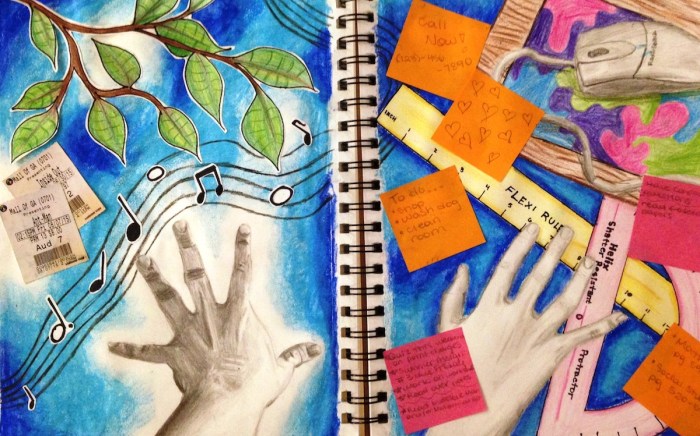
Visual journaling is a powerful tool for self-expression and introspection. Colors play a crucial role in this process, acting as a visual language that can evoke emotions, memories, and experiences. By understanding the connection between colors and emotions, you can harness the power of color archetypes to deepen your journaling practice and unlock new levels of self-discovery.
Color Archetypes and Their Meanings
Color archetypes represent universal meanings and associations that are often linked to emotions and experiences. Understanding these archetypes can help you better understand your own emotional landscape and use colors more intentionally in your visual journaling.
- Red:Energy, passion, anger, courage, and vitality. Red can represent feelings of excitement, intensity, or aggression. It can also symbolize love, desire, and a strong will.
- Orange:Creativity, enthusiasm, joy, and optimism. Orange can represent feelings of happiness, warmth, and playfulness. It can also symbolize confidence, creativity, and a sense of adventure.
- Yellow:Joy, optimism, intellect, and clarity. Yellow can represent feelings of happiness, sunshine, and warmth. It can also symbolize intelligence, wisdom, and a sense of hope.
- Green:Growth, balance, harmony, and healing. Green can represent feelings of peace, tranquility, and rejuvenation. It can also symbolize nature, prosperity, and a sense of renewal.
- Blue:Calmness, peace, trust, and communication. Blue can represent feelings of serenity, stability, and security. It can also symbolize intuition, wisdom, and a sense of connection.
- Purple:Intuition, spirituality, mystery, and transformation. Purple can represent feelings of mystery, magic, and spirituality. It can also symbolize royalty, wisdom, and a sense of transformation.
- Pink:Love, compassion, gentleness, and nurturing. Pink can represent feelings of love, kindness, and tenderness. It can also symbolize innocence, playfulness, and a sense of comfort.
- Brown:Earthiness, grounding, stability, and security. Brown can represent feelings of comfort, security, and stability. It can also symbolize nature, practicality, and a sense of belonging.
- Black:Mystery, power, sophistication, and elegance. Black can represent feelings of mystery, power, and sophistication. It can also symbolize mourning, grief, and a sense of emptiness.
- White:Purity, innocence, new beginnings, and clarity. White can represent feelings of peace, clarity, and new beginnings. It can also symbolize purity, innocence, and a sense of wholeness.
Visual Journal Spread for Healing
Imagine you are working through feelings of anxiety and stress. You can create a visual journal spread using color archetypes to represent your healing journey.
Page 1: The Storm
- Use blackand dark grayto represent the darkness and intensity of your anxiety.
- Use redand orangeto depict the chaotic energy and overwhelming emotions you are experiencing.
- Draw jagged linesand sharp anglesto reflect the sharp, unsettling sensations you are feeling.
Page 2: Finding Calm
- Use blueand greento represent calmness and serenity.
- Draw soft curvesand gentle wavesto symbolize a sense of peace and tranquility.
- Use whiteto represent a sense of clarity and hope emerging from the darkness.
Page 3: Growth and Renewal
- Use yellowand greento represent growth, optimism, and renewal.
- Draw blooming flowersand growing plantsto symbolize a sense of progress and healing.
- Use pinkto represent love, compassion, and self-care.
This visual journal spread allows you to explore your emotional landscape, track your healing journey, and celebrate your progress. Remember, your visual journal is a personal space for self-discovery and expression. Experiment with different colors and techniques to find what works best for you.
Color Archetypes – Healing Processes in the Visual Journal can be a super powerful way to tap into your emotions and get creative. You can even use these insights to turn your artistic passion into a side hustle! Check out Crafting Your Income How to Market Your Handmade Products for tips on selling your creations.
Once you’ve got the marketing down, you can dive back into your visual journal and explore how different colors can help you heal and grow.
Visual Journaling Techniques for Healing
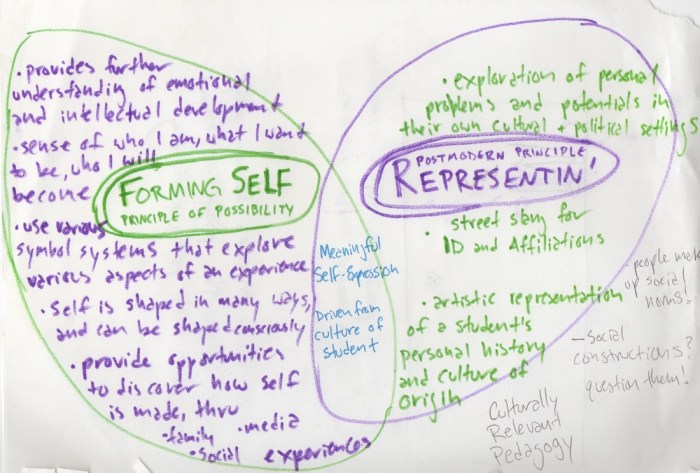
Visual journaling is a powerful tool for emotional processing and healing. It allows you to express your feelings and experiences in a non-verbal way, giving you a deeper understanding of yourself and your emotions. Using color archetypes can enhance the effectiveness of visual journaling by adding a layer of symbolism and meaning to your artwork.
Color Archetypes – Healing Processes in the Visual Journal can help you unlock your inner badass. You know, like those times you’re journaling and you’re just vibing with your fave color, purple, and suddenly, you’re feeling like you’re on top of the world! That’s because colors are like superpowers for your emotions.
If you’re looking for a guide to help you embrace your inner power and live your best life, check out this awesome article: Sing Your Name Out Loud 15 Rules for Living Your Dream. You’ll find that the connection between colors and your dreams is super powerful and can really help you on your journey of self-discovery.
It’s like a magic potion for your soul, and you’ll totally feel the difference in your journaling sessions.
Visual Journaling Techniques
Visual journaling techniques offer a variety of ways to express your emotions and experiences. Each technique has its unique strengths and can be adapted to your specific needs and preferences. Here are some common visual journaling techniques:
- Automatic Drawing:This technique involves letting your hand move freely across the page without conscious thought. This allows for spontaneous expression of emotions and thoughts that might be difficult to articulate verbally.
- Collage:Using magazines, newspapers, or other materials, you can create a collage that represents your current emotional state or a specific experience. This technique allows for a more tactile and sensory approach to journaling.
- Mandala Drawing:Mandalas are circular designs that are often used in meditation and spiritual practices. Creating a mandala can be a calming and centering experience, helping you to focus on the present moment and connect with your inner self.
- Mind Mapping:This technique involves creating a visual representation of your thoughts and ideas, connecting them in a web-like structure. Mind mapping can be helpful for exploring complex emotions and identifying patterns in your experiences.
- Sketching:Drawing simple sketches of your emotions, experiences, or even just objects that represent your feelings can be a powerful way to process and understand them.
Using Color Archetypes in Visual Journaling
Color archetypes can add depth and meaning to your visual journaling practice. Each color carries symbolic associations that can be used to express your emotions and experiences in a more nuanced way.
- Red:Represents passion, energy, and vitality. It can be used to express anger, excitement, or a sense of urgency.
- Orange:Represents creativity, joy, and optimism. It can be used to express happiness, enthusiasm, or a sense of playfulness.
- Yellow:Represents intellect, clarity, and optimism. It can be used to express joy, hope, or a sense of enlightenment.
- Green:Represents growth, harmony, and nature. It can be used to express feelings of peace, tranquility, or connection to the natural world.
- Blue:Represents peace, calmness, and stability. It can be used to express sadness, tranquility, or a sense of serenity.
- Purple:Represents spirituality, intuition, and wisdom. It can be used to express feelings of mystery, inspiration, or a connection to the divine.
- Black:Represents power, mystery, and the unknown. It can be used to express grief, sadness, or a sense of emptiness.
- White:Represents purity, innocence, and new beginnings. It can be used to express feelings of hope, peace, or a sense of renewal.
Comparing and Contrasting Visual Journaling Methods
The effectiveness of different visual journaling methods depends on your individual needs and goals.
- For processing intense emotions:Automatic drawing, collage, and sketching can be effective for expressing raw emotions and experiences. These techniques allow for a spontaneous and uninhibited release of feelings.
- For exploring complex thoughts and ideas:Mind mapping can be helpful for visualizing intricate relationships between thoughts and emotions. It allows you to see the bigger picture and identify patterns in your experiences.
- For finding inner peace and calmness:Mandala drawing can be a calming and centering experience, helping you to connect with your inner self and find a sense of peace.
Step-by-Step Guide for Using Color Archetypes in Visual Journaling
Here’s a step-by-step guide to using color archetypes in a visual journaling session focused on healing:
- Choose a color archetype:Select a color that resonates with you and your current emotional state. Consider the symbolic associations of the color and how it relates to your feelings and experiences.
- Set an intention:Before you begin journaling, take a moment to set an intention for your session. What emotions or experiences do you want to explore? What do you hope to gain from this process?
- Choose a visual journaling technique:Select a technique that aligns with your intention and your preferred way of expressing yourself.
- Journal:Allow yourself to express your emotions and experiences freely, using the chosen color and visual journaling technique. Don’t worry about creating a perfect piece of art. Focus on expressing yourself authentically.
- Reflect:After you finish journaling, take some time to reflect on your experience. What did you learn about yourself and your emotions? How did using the color archetype enhance your journaling experience?
Book Review: “The Color Code” by Karen Salmansohn
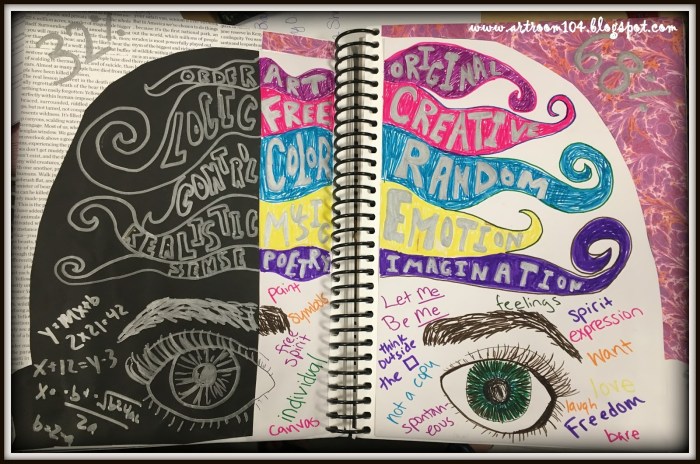
“The Color Code” by Karen Salmansohn is a fun and insightful guide to understanding yourself and others based on your color personality. It’s like a personality quiz meets self-help book, and it’s packed with practical tips and strategies for improving your relationships and achieving your goals.
Key Concepts of “The Color Code” and Their Relation to Color Archetypes
“The Color Code” identifies four primary color personalities: Red, Blue, Green, and Yellow. Each color represents a distinct set of personality traits, motivations, and communication styles. This framework aligns with the concept of color archetypes, which explores the symbolic meanings and psychological associations of colors.
Color archetypes in visual journaling can be a powerful tool for self-discovery and healing. It’s like a secret language of your soul, and using color can help you tap into emotions and experiences you might not even realize are there.
If you’re looking for a fun and creative way to explore this, check out the Bloom Coloring book for Adults which is packed with beautiful floral designs that can inspire you to get creative and use color to express yourself.
You might be surprised at the insights you gain by letting your intuition guide your color choices.
- Red:Energetic, passionate, and driven. Red individuals are often seen as leaders, assertive, and ambitious. This aligns with the color archetype of fire, symbolizing power, passion, and intensity.
- Blue:Calm, compassionate, and nurturing. Blue individuals are often seen as reliable, trustworthy, and supportive. This aligns with the color archetype of water, symbolizing emotions, intuition, and healing.
- Green:Organized, analytical, and detail-oriented. Green individuals are often seen as practical, efficient, and reliable. This aligns with the color archetype of earth, symbolizing stability, grounding, and practicality.
- Yellow:Optimistic, creative, and spontaneous. Yellow individuals are often seen as playful, enthusiastic, and free-spirited. This aligns with the color archetype of air, symbolizing intellect, communication, and inspiration.
Applying “The Color Code” to Visual Journaling for Healing
“The Color Code” can be a powerful tool for self-discovery and healing through visual journaling. By exploring your color personality and its associated traits, you can gain deeper insights into your thoughts, feelings, and behaviors. This understanding can then be used to identify areas for personal growth and create a more fulfilling life.
- Identifying and Expressing Emotions:Each color personality has a unique way of expressing emotions. For example, a Red individual might express anger through action, while a Blue individual might express sadness through introspection. By using colors in your visual journal, you can explore and express your emotions in a safe and creative way.
- Visualizing Goals and Dreams:Each color personality has a different approach to achieving goals. A Green individual might create a detailed plan, while a Yellow individual might focus on the creative aspects of their dreams. Visual journaling can help you visualize your goals and dreams in a way that aligns with your color personality, making them more tangible and achievable.
- Developing Self-Awareness:“The Color Code” emphasizes the importance of understanding your own personality and how it affects your interactions with others. By using color in your visual journal, you can explore your strengths and weaknesses, identify patterns in your behavior, and gain a deeper understanding of yourself.
Personal Insights and Experiences
As a visual journaler myself, I’ve found “The Color Code” to be a valuable resource for enriching my practice. I’ve used the book’s principles to explore my own color personality, which I identify as a combination of Blue and Green.
This has helped me understand my need for balance between emotional expression and practical action. I often use blue and green hues in my visual journals to represent these two aspects of myself, creating a visual representation of my inner world.
Comparison of Color Archetypes
Here’s a table comparing and contrasting the color archetypes presented in “The Color Code” with other color archetype systems:
| Color Archetype | “The Color Code” | Other Systems | Similarities | Differences |
|---|---|---|---|---|
| Red | Energetic, passionate, driven | Fire, passion, intensity | Strong, active, assertive | Focus on leadership and ambition |
| Blue | Calm, compassionate, nurturing | Water, emotions, intuition | Sensitive, empathetic, introspective | Focus on healing and support |
| Green | Organized, analytical, detail-oriented | Earth, stability, practicality | Structured, grounded, reliable | Focus on efficiency and planning |
| Yellow | Optimistic, creative, spontaneous | Air, intellect, communication | Playful, enthusiastic, imaginative | Focus on inspiration and free-spiritedness |
Ultimate Conclusion
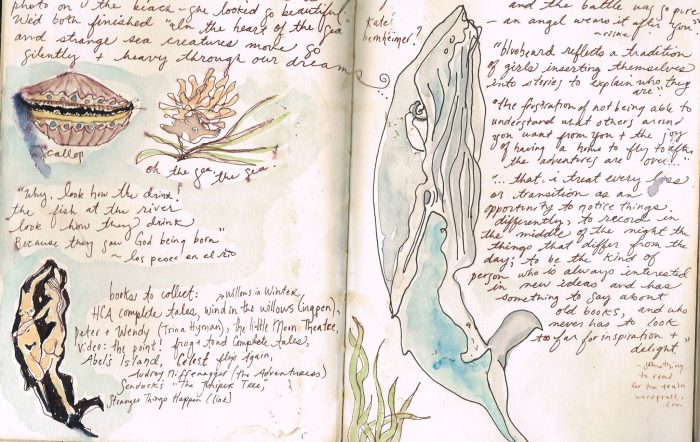
So, grab your favorite art supplies, let go of any artistic perfectionism, and dive into the world of color archetypes. Your visual journal is waiting to become a vibrant tapestry of your healing journey, one color at a time.
Remember, it’s not about getting it right, it’s about expressing yourself, releasing your emotions, and discovering the healing power within.
Detailed FAQs
What are some examples of color archetypes and their meanings?
Red is often associated with passion, energy, and anger. Blue can represent calmness, peace, and sadness. Green symbolizes growth, nature, and healing. Yellow is linked to joy, optimism, and intellect. Purple often represents spirituality, intuition, and mystery.
Remember, these are just general interpretations, and your personal connection to colors might be different!
Can I use color archetypes even if I’m not an artist?
Absolutely! Visual journaling isn’t about creating masterpieces. It’s about expressing yourself in whatever way feels comfortable. You can use simple shapes, doodles, or even just colored dots to represent your emotions. The key is to be authentic and let the colors flow.
How often should I journal using color archetypes?
There’s no right or wrong answer here. Listen to your intuition. Journaling daily can be beneficial, but even a few times a week can make a difference. The important thing is to make it a regular practice and be consistent.

